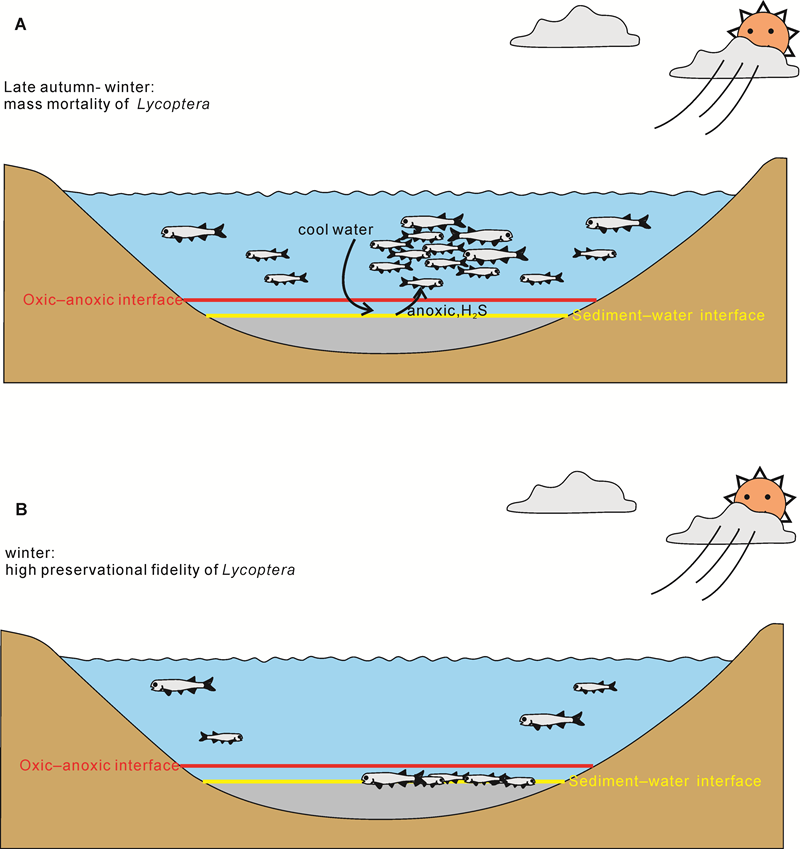A paper entitled “Biostratinomic Analysis of Lycoptera Beds from the Early Cretaceous Yixian Formation, Western Liaoning, China” by Dr. PAN Yanhong et al. from Nanjing Institute of Geology and Palaeontology, Chinese Academy of Sciences and their colleagues has been recently published in Palaeontology.
Little is known about the palaeoenvironments of the Early Cretaceous lakes of western Liaoning. Uncertainties exist especially about the water depth, water temperatures and annual temperature fluctuations. Here, Dr. PAN et al. analyse the preservation of the most abundant fish of the lakes, the teleost Lycoptera, articulated skeletons of which occur in large concentrations suggestive of mass mortality. Taphonomic features such as degree of disarticulation, orientation patterns and displacement of skeletal elements reveal distinct preservational patterns. They suggest that the water temperature was low during winter and exhibited pronounced seasonal fluctuations. The depth of the lakes was not deep. Possible causes of the fish mortality are discussed, of which anoxia is favoured. This leads to a more refined palaeoenvironmental model for these palaeolakes, which harbour one of the most important Mesozoic Lagerst?tten.
Related information of this paper: Yanhong Pan, Franz T. F Fürsich, Jiangyong Zhang, Yaqiong Wang, Xiaoting Zheng, 2015. Biostratinomic analysis of Lycoptera Beds from the Early Cretaceous Yixian Formation, Western Liaoning, China. Palaeontology, Vol 58, pp. 537-561.

Examples of Lycoptera A B concentrations. A, monospecific concentration of Lycoptera davidi on slab 1, from Daxinfangzi village, deposited in IVPP. B, monospecific concentration of Lycoptera davidi on slab 2, from Daxinfangzi village, deposited in Tianyu Museum. C, monospecific concentration of Lycoptera muroii on slab 3, from Jinggangshan village, deposited in Tianyu Museum. All scale bars represent 5 cm.

Model representing stages C and D mentioned in the text. A, during late autumn to early winter, upwelling toxic bottom waters caused mass mortality of a fish population. B, in winter, the fish carcasses sank to the anoxic lake floor, which favoured the high preservational fidelity of Lycoptera carcasses.

